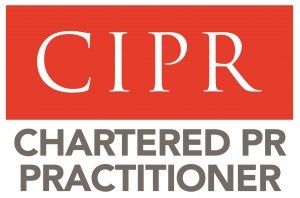A cost-effective marketing tactic that taps into current consumer trends is at your fingertips

This article's aim is to give you some useful, practical advice on how to turn media engagement into a successful part of your marketing strategy during Covid-19. But first, some context.
We know the pandemic has forced marketing teams to rethink strategies for 2020-21. Some 65% of marketers anticipate a decrease to their annual marketing budget and 86% predict that their marketing goals will be harder to reach, according to a new survey
by Marketing Week, The Impact of COVID-19 on Marketing: Economic Turbulence, Uncertainty, and the Path Forward.
It has tightened the marketer's purse strings, necessitated fresh thinking on brand and positioning and refocused priorities on low cost–high ROI investments. Advertising is taking a hit – 28% of marketers will invest less in high cost channels such as paid-for media, the Marketing Week survey found – but more than a third of those interviewed will invest in lower cost channels, such as search engine optimisation (SEO). It's very much about getting 'more bang for your buck' in marketing right now.
At the same time, the outbreak has changed media consumer behaviours.
Research
published early in the pandemic by data, insights and consulting company Kantar highlighted the growing trends – increases in web browsing (70%) and social media engagement (63%), for example. And among these trends was a surge by people towards traditional nationwide news channels, including print and broadcast (52% identified them as trusted sources of information - the highest score among channels for trustworthiness).
And these attitudes and behaviours towards traditional news channels brings an opportunity for organisations – to achieve marketing goals cost effectively while tapping into the enduring faith in these media outlets. Publication or broadcast in earned media channels that reach target audiences can hit a sweet spot for marketers - it has reach and it’s inexpensive. There is a flipside; it’s a tactic that can be notoriously difficult to evaluate for ROI and it doesn’t offer the message control that cold hard cash in the form of advertising spend gives you. But media-savvy organisations that understand how to work with journalists are gaining positive profile during Covid-19 without breaking the bank. It has become a successful tactic in their marketing strategies during the pandemic. So how are they doing it?
Ten steps to success
If you’ve identified how media engagement can drive your KPIs as part of a marketing strategy, and which channels can reach those key target audiences, here are some useful tips to consider before you contact a journalist.
1 Go easy on promoting your product or service:
An advert masquerading as a news story is essentially a ‘puff piece’ and journalists can’t stand them. And trying it on can impact on your future relationship with the news outlet.
2 Approach as an authority in your sector:
Take a step back, identify the issues in your industry and then think about how you can harness all that knowledge you have as a solution provider. This is how you build your brand.
3 Know and understand your target media outlet’s news values:
It’s lazy to approach an outlet, whether it’s a newspaper, online channel or broadcaster, without first studying the content they broadcast or publish. In the first few seconds of a conversation, the editor or journalist will know if you have something that interests them.
4 Understand the different opportunities with that outlet:
For a print publication, for example, it doesn’t have to be an article in the news section. It could be a feature, an opinion piece or a sidebar to a wider feature on your sector. You simply take a good look and consider which opportunties offered play to your strengths.
5 Be different:
Too many organisations take the ‘me too’ approach with issues. Different perspectives and counter-views are of course ‘newsier’. Offering an alternative opinion or news angle helps to differentiate your brand and suggests confidence.
6 Timing is everything:
‘Why now?’ Is a common question for journalists. If your idea is topical, it will resonate more loudly with the target audience because the matter will probably be on their mind. For example, a piece about the mental health and resilience of workers returning to workplaces is timely as Covid-19 lockdown measures are eased.
And many publications publish a forward plan of themes for future editions in their media packs to attract advertisers, so you can pitch an idea for editorial that’s timed nicely with the editorial team’s schedule.
7 Have a case study:
This is how you show, not tell. Audiences naturally take on information more easily when you can demonstrate ‘real world’ examples of the issue you’re trying to raise. Case studies provide different voices and good photo and film opportunities, enhancing your overall media package.
8 Have new research or another form of new information, if possible:
Nothing beats fresh information for a journalist. If it’s interesting to their audience, it’s news. If you can’t afford a market research company, can you use an application such as Survey Monkey to conduct a poll of your customers or members?
9 Supply images:
Sourcing fresh imagery, stills or video, is another task for an editor. If you can provide good quality, high-resolution pictures or a competently filmed clip, this just makes it easier for them to say yes and could be the difference between a brief mention or a fuller feature.
10 And flex when necessary:
Your pitch may not be exactly what the journalist is looking for, but with a bit of work it could be. Or it could at least form part of a wider feature. If you can meet the outlet halfway without compromising your aims and key messages, it’s worth adapting your story idea if it means securing that coverage.
Securing positive media coverage in channels that reach your target audiences can achieve many things - brand building, positioning as a leader and lead generation. And it’s one of the most cost-effective tactics you can employ. But that investment in honing your approach is well worth your time and energy. Good luck!
Get in touch with us at Branagh PR if you want to enhance your brand and reach target audiences with media engagement.




